How are new frog species formed?
How do similar animals evolve to the point of forming different species incapable of hybridizing? This question has been nagging researchers in evolutionary biology since Darwin.
Christophe Dufresnes, Nanjing Forestry University and Pierre-André Crochet, University of Montpellier
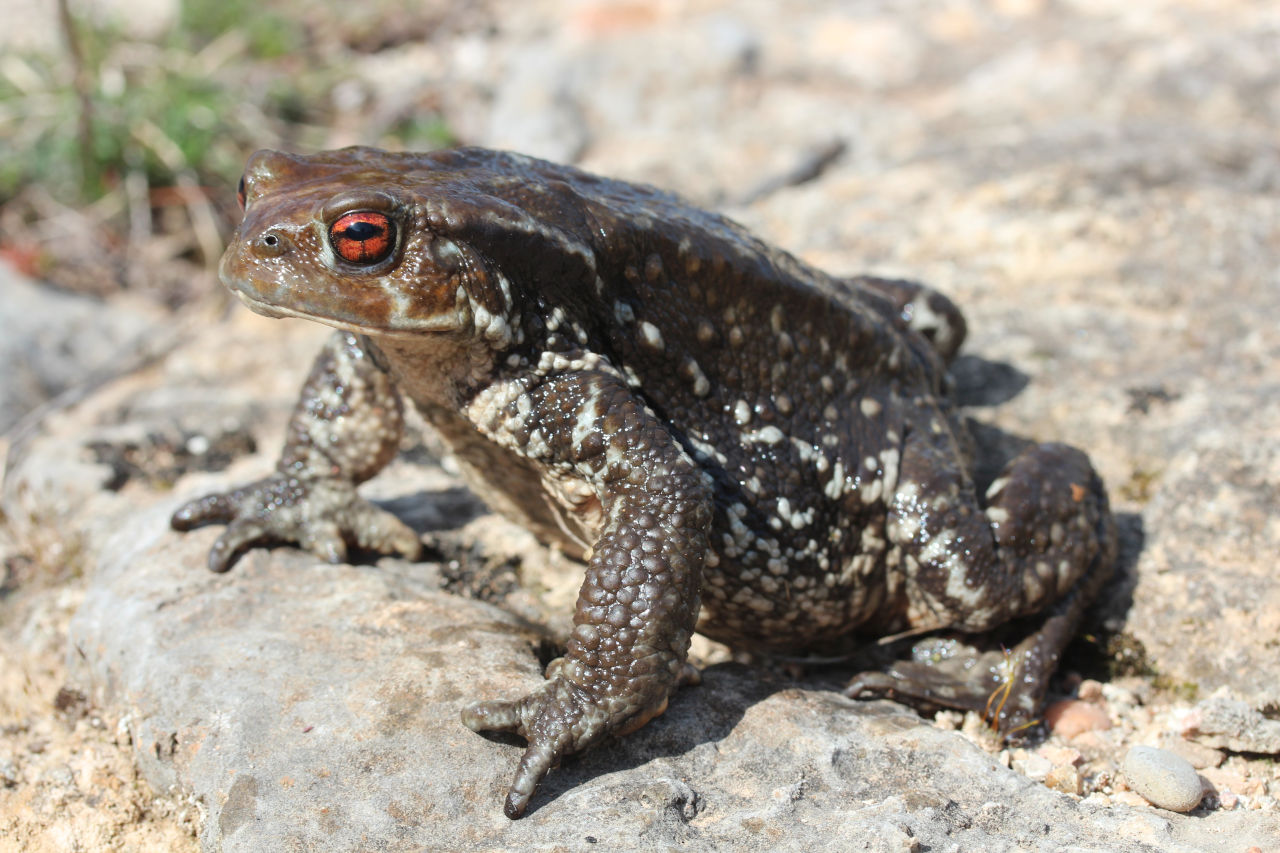
Some imagine a rapid process, the result of modifications to a few key genes for mate choice or ecology: hybridization then becomes detrimental, as the offspring, even if viable, will be neither attractive nor adapted to the parental environments due to their intermediate characters.
Others see it more as the effect of gradual genome differentiation: when populations remain isolated for millions of years, all their genes diverge under the effect of mutation and become progressively incompatible, inducing development and fertility problems in hybrids.
Hybrid zones as a laboratory
To confront these two major hypotheses, we have focused on amphibian hybrid zones: geographical regions where more or less divergent genetic lineages of toads, frogs or tree frogs meet, and mix if affinity. The idea is to measure the degree of divergence necessary to limit hybridization, and the number of genes potentially responsible.
To achieve this, DNA had to be collected from natural populations, which required a considerable field effort involving numerous trips across Europe, North Africa and the Near East, with the help of close collaborators abroad for almost 5 years. These samples were then analyzed using so-called "genomic" tools, which give access to thousands of regions of the genome.
The rewards were considerable: firstly, the analyses led to the discovery of new species, and clarified many questions about the evolution of the Europeanherpetofauna. In particular, the application of so-called "molecular clocks" to DNA sequences has made it possible to date when species first appeared, i.e. when they diverged from their cousins. In all, some forty natural geographic transitions have been compared, representing all known genera on the old continent.
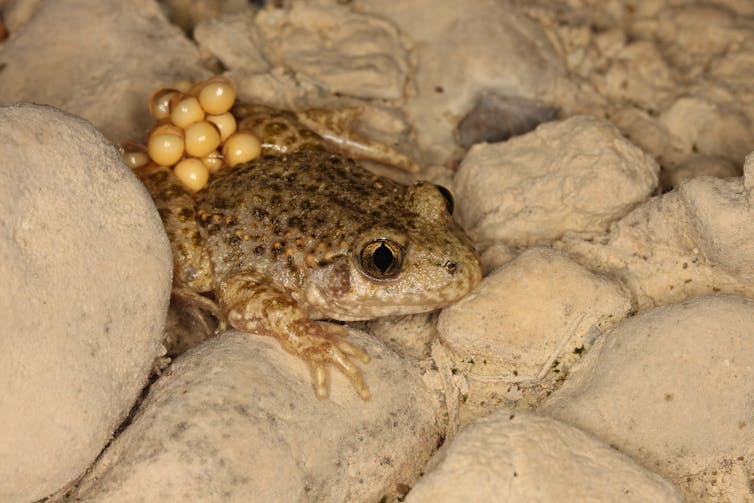
Christophe Dufresnes, Provided by the author
It takes time to make a new frog
The results, published in PNAS, show that it is the whole genome, diverging over millions of years, that is gradually becoming incompatible between emerging species, rather than just a few key genes. Older lineages therefore have more trouble hybridizing than younger ones, as a greater number of genes have lost their compatibility.
Thus, lineages isolated during the last ice ages still manage to hybridize without worry, and traces of this can be found over hundreds of kilometers. A sign that their very similar genomes have lost none of their compatibility. This is particularly true of the Iberian and French forms of the Spotted Pelodyte, which hybridize throughout Catalonia (see figure).
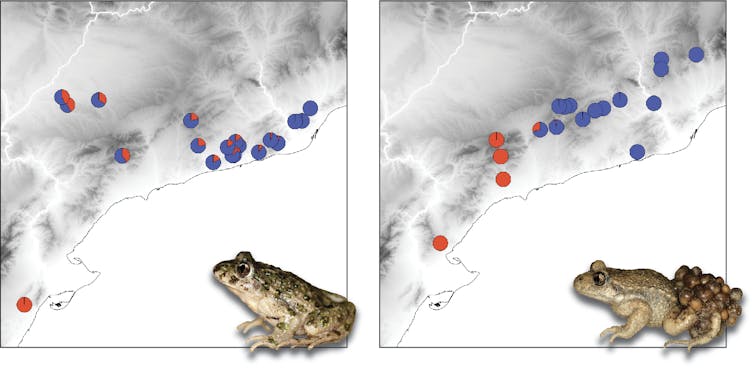
Christophe Dufresnes, Provided by the author
Several million years later, however, genetic exchanges are much more limited. For example, flycatchers and almogavaras only mix within a few kilometers of each other (see figure). This is because hundreds of genes have become incompatible, and together reduce the viability and fertility of hybrids. These are what researchers call "barrier genes", as they are at the origin of reproductive barriers.
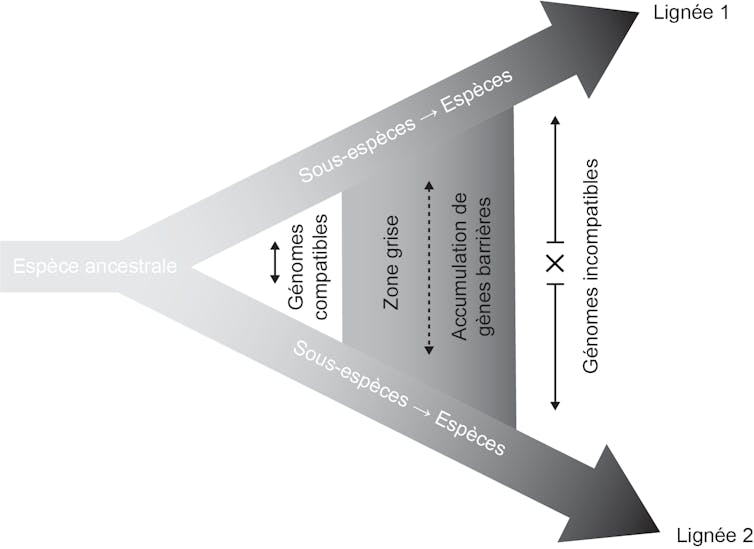
Christophe Dufresnes, Provided by the author
At first, we make mistakes
As they are initially maintained by essentially genetic mechanisms (incompatibilities at numerous genes) that take millions of years to set up, amphibian species evolve relatively slowly. For the rest, however, they remain identical in our eyes: same ecology, same morphology, same mating calls. We speak of "cryptic" species, identifiable only through molecular tools.
But since they still look so much alike, these cryptic species are always trying to hybridize when they cross paths - and wrongly so. We'll have to wait a little longer for sufficiently marked external differences to evolve, so that they avoid mating with the wrong partner.
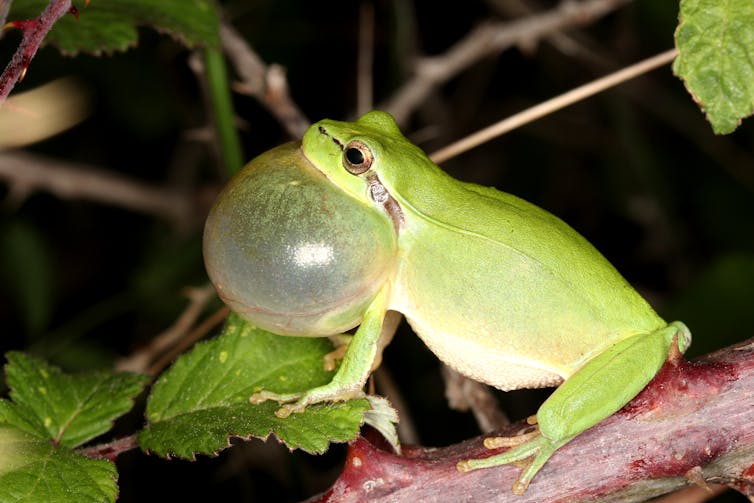
Christophe Dufresnes, Provided by the author
A new approach to classifying biodiversity
By showing that species formation was a gradual process that can be quantified at the genetic scale, the study opens the way to new concepts for categorizing evolutionary lineages into subspecies or species.
More specifically, below two million years of divergence, frogs and toads remain compatible and are at best subspecies. It's beyond five million years that we're almost certainly in the presence of true species. In between, there's a "grey zone", where lineages can nevertheless be classified by inspecting the number of barrier genes already accumulated.
With hundreds of new species being discovered around the world every year, this type of standardized approach should help to establish more objective and therefore more stable taxonomic lists not only for amphibians, but for all animal groups, which is necessary to decide which are the priority species to protect.![]()
Christophe Dufresnes, University Professor of Zoology, Nanjing Forestry University and Pierre-André Crochet, Director of Research, University of Montpellier
This article is republished from The Conversation under a Creative Commons license. Read theoriginal article.